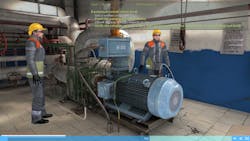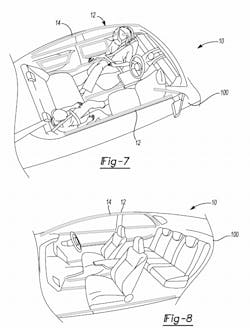With unemployment shrinking and automotive suppliers investing about $16 billion into the state (from 2009 through the second quarter of 2015), Detroit still stands strong. Michigan is close to 63 top North American auto suppliers, and a short drive to about three-quarters of all R&D facilities in the automotive industry.
In Part 1 of my trip to the new Motor City I visited Baker Industries, an automotive and aerospace company that has grown rapidly with the regions resources, hard work, and dedicated government support. Part 2 spotlighted Roush, a solid performer in the racing world that has expanded into a large diverse company, and eos a 3D printers manufacturing company for metal and plastic.
In Part 3, I visit WeDoo, an international digital company specializing in experience design, virtual and augmented reality, product configuration systems, and software development. The company has designed smart devices and software for automotive companies and is working to advance new technologies used in the industry.
I was able to watch this video and not only see the gage as we throttled the pressure move accordingly, but hear the pressure increase. Other than the workers in this image, it is an exact match of the work area (right down to the cracked tiles).
WeDoo
I don’t tend to think of software when I think of Detroit. Nevertheless, after a brief intro and overview of the company and its projects, WeDoo’s competency appears to be in visualizing data, which is valuable to many verticals. One video it showed (“Disaronno: The Mixing Star”), engagingly showcased a competition to see who could make the best cocktail featuring Disaronno liqueur. This expertise expands into the automotive industry, as WeDoo also showed off the new Alfa Romeo website.
The new website conveys the world of Alfa Romeo and its DNA, from its historic cars and racing heritage to modern-day production: the brand’s style, design, evolution, technology, and innovation.
Images are the stars of the portal, creating an engaging visual storytelling process with an evocative aesthetic storybook. While it’s packed with information, the portal is still functional and easy to browse, like a magazine.
The company explained while industry is already using its technology, it wants to go a step further. Sitting in the chair at home experiencing virtual reality, one misses the real-world feel, and the real world is missing a lot of the data and features that are possible in a virtual platform. WeDoo’s goal is to bring together the best of both worlds.
This is a great way to not miss any information, but not have to deal with a salesman.
For example, if you are shopping for a car at a dealer, using an augmented reality (AR) platform will allow shoppers to physically walk around a lot while being able to bring up all the data on a car. If they want to see another model or color, AR could search the lot and let you know in real-time if the other model or color is on-site, and where it is on the lot.
If a shopper doesn’t feel like walking AR, software can change the color of the car in front of you to match the one you want digitally. For Alfa Romeo, WeDoo offers configurators for the 4C, 4C spider, and Giulia, bringing together research, CGI, design, and development; users can select available features and build their car right on the lot in front of their eyes.
WeDoo is also producing software that may lead the way in digital training. Virtual classroom training and AR on the job training are popular trends in which companies are investing. Being able to streamline training digitally lets students train on a digital twin of the company’s exact equipment and setup. Even sounds can train students to identify the equipment running, along with the ability to identify frequency changes or changes with gages and indicators that may indicate a problem.
The segmented lines running along the interior of the vehicle indicate where a light array could be installed to help prevent motion sickness (Credit: Michigan University).
Sick of Virtual Reality
Interestingly, as AR and VR technology gains in popularity, motion sickness may be an increasing problem. This is also true in self-driving vehicles. Motion sickness can occur when the inner ear, vision, and other sensory receptors have conflicting inputs.
University of Michigan researchers have received a patent on a universal motion sickness counter measurement system they developed to provide light stimuli in the visual periphery of the passenger to mimic what the rider might see outside. This system eliminates the conflict between vestibular and visual inputs. The patent covers both wearable and vehicle-based embodiments of the system.
Michael Sivak and Brandon Schoettle of the University of Michigan Transportation Research Institute are working with University’s Tech Transfer to commercialize their invention. Sivak said that about half of adults get motion sick at times when reading a book in a moving vehicle, so a solution to motion sickness will be necessary as self-driving vehicles (and perhaps, VR markets) grow.
Understanding how to better control motion sickness may help people enjoy autonomous vehicles and VR training in the future. WeDoo was not what I expected to run into while visiting Detroit, but it does show the talent and diversity this city attracts.




